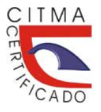Appellations of origin and geographical indications as a commercial strategy for products from rural communities
DOI:
https://doi.org/10.5281/zenodo.12208577Keywords:
agri-food products, artisanal products, commodities, designation of origin, geographical indicationAbstract
For developing countries, traditional or conventional national and international marketing strategies are through commodities, which are important and fundamental in the trade balances of the countries, but the marketing of agri-food and artisanal products from Specific geographic regions that give the products a quality assurance that consumers are willing to obtain because they guarantee to be artisanally manufactured, almost always free of preservatives and substances harmful to health. Such is the case of products; agricultural, food and artisan products that are made having as characteristic features the geographical conditions of a specific site that, due to having distinctive conditions of climate, soil and cultural aspects of the people who inhabit them that incorporate properties into the products that only yes and only If the natural and cultural environment of the people can provide it, the main objective of this work is to draw the attention of officials from the three levels of government; National, State and Municipal, to promote and facilitate the generation of Designations of Origin and Geographical Indications as a tool to enhance National, Regional and Rural development. Because they are marketing resources that should be used more widely by developing countries such as Mexico, which only has 4 (IG) and 16 (DO) with official registration with the Mexican Institute of Industrial Protection (IMPI), while the 27 countries that make up the European Union have 377 (IG) and a still undetermined number of (DO).
Downloads
References
Blakeney M. (2001). Proposals for the international regulation of geographical Indications. Journal of World Intellectual Property, 4, 629-52.
DOF (2020). Diario Oficial de la Federación. Ley Federal de Protección a la Propiedad Industrial. https://www.diputados.gob.mx/LeyesBiblio/ref/lfppi/LFPPI_orig_01jul20.pdf
DOF (2017). Publicado en el Diario Oficial de la Federación el 10 de agosto de 2017.
https://www.gob.mx/cms/uploads/attachment/file/253199/AV82.pdf
Escudero, S. (2001). International protection of geographical indications and developing countries, Trade Working Paper, 10.
IMPI (2024). Instituto Mexicano de la Propiedad Industrial. Indicaciones Geográficas nacionales e Internacionales. https://acervomarcas.impi.gob.mx:8181/marcanet/vistas/common/datos/bsqIndicacionGeografica.pgi
IMPI (2018). Instituto Mexicano de la Propiedad Industrial, Denominaciones de Origen e Indicaciones Geográficas. https://www.gob.mx/impi/acciones-y-programas/servicios-que-ofrece-el-impi-marcas-denominaciones-de-origen-e-indicaciones-geograficas?state=published
Libert, H., Petit, M. (2009). Are Geographical Indications a Valid Property Right? Global Trends and Challenges. Development Policy Review 27(5), 503-528.
OIV. 2021. Organización Internacional de la Viña y el Vino https://www.google.com/search?q=cuantas+denominaciones+de+origen+hay+en+el+mundo+en+2021&rlz=1c1chbf_esmx927mx927&oq=cuantas+denominaciones+de+origen+hay+en+el+mundo+en+2021&gs_lcrp=egzjahjvbwuybggaeeuyotihcaeqirigadibctexote2ajbqn6gcalacaa&sourceid=chrome&ie=utf-8
OMPI (2024). Organización Mundial de Propiedad Intelectual. https://www.wipo.int/geo_indications/en/
Vivas Eugui, D. (2001). Negotiations on geographical indications in the TRIPs council and their effect on the OMC agricultural negotiations: Implications for developing countries and the case of Venezuela. Journal of World Intellectual Property, 4, 703-28
Downloads
Published
How to Cite
Issue
Section
License
Copyright (c) 2024 Universidad & ciencia

This work is licensed under a Creative Commons Attribution-NonCommercial-ShareAlike 4.0 International License.





















